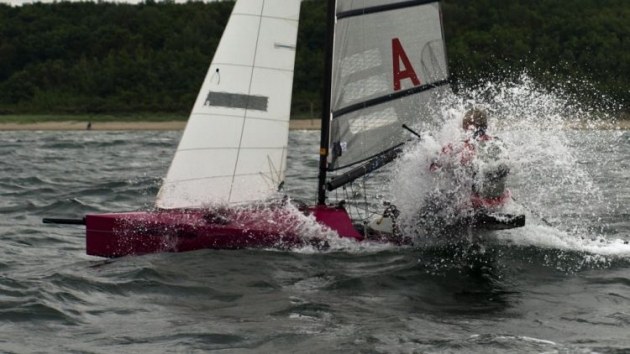International Decked Sailing Canoe Rules approximately 1936
These are provided for historical interest only and are not applicable for any Canoe today.
General Regulations
Hull - - sharp at both ends as seen from above without counter-stern or transom.
Method of measuring hull - - length taken between perpendiculars at fore end of stem and after end of stern; beam taken at widest part wherever found but not including outwales; depth taken amidships from under surface of garboard strake adjacent to keel, to the level of gunwale.
Method of measuring sail area - - actual area exclusive of roach along spars when sail is stretched taut with tension of 5 pounds (2.27 kilos.) on a spring balance; area of roach of leach taken as 2/3 of chord times greatest width of segment.
Method of measuring Sail height - - measured on canoes rigged for racing as vertical distance from topmost point of sail to top of deck.
Paddle - - not less than 39-3/8 inches (l metre) in length carried in all races.
Tow line - - a substantial painter at least 9 feet, 10-l/8 inches (5 metres) permanently fastened to bow in a manner to be readily accessible for towing.
Specific Classification
Hull - - sharp at each end and the curve of a line alone the outside of the gunwale or along the line of greatest beam wherever found shall be s fair curve. The angle of bow and stern as seen from above shall not exceed 90 degrees. The outline of any cross section from gunwale to keel shall not be less than a radius of 3 inches. Sheer to be a continuous concave curve.
Length - - maximum 17 feet 3/4 inch (5.20 metres], minimum 16 feet (4.87 metres).
Beam - - maximum 43-l/4 inches (1.10 metres), minimum 37-3/8 inches (.95 metres). Greatest beam at waterline with 150 pounds (68 kilos) load aboard and in sailing trim shall not be less than 88% of greatest beam wherever found.
Depth - - not less than 5.5% of length overall.
Weight - - minimum stripped hull weight shall not be less than length overall times beam times k. Where length overall and beam are in feet and decimals and the weight in pounds, k equals 2.4. Where length overall and beam are in metres and the weight in kilograms k equals 11.72. Stripped hull means the hull of the canoe without centerboard, plate tackle or winch, rudder, rudder frame, post or tiller, masts, spars, sails, standing and running rigging, winches, deck seat, bottom boards, hatch covers and other loose equipment; but may include cleats, stayplates, fairleads, horse, tabernacle, stem, stern and keel bands and small permanent fittings. Where doubt exists as to the proper inclusion or exclusion of any fitting or attachment the decision of the Official Measurer shall be final.
Construction - - aluminum or its alloys shall not be used in the construction of the hull, but may be used for fittings.
Centerboard - - must be capable of being raised so as not to project below the keel. It shall not project more than 3 feet 3 3/8 inches (l metre) below the body of the canoe when lowered. It shall be easily detachable. The combined weight of centerboard and rudder (blade) shall not exceed one-half of the allowable minimum stripped hull weight.
Sliding seat - - shall not extend beyond four feet (1.22 metres) from side of canoe and shall not be ballasted.
Buoyancy - - shall be equipped in racing trim with means to provide positive buoyancy of at least 100 pounds (45.36 ki1os.}.
Sail area - - not to exceed 107.64 square feet (10 square metres).
Sail height - - for any sail not to exceed 19 feet (5.8 metres}; for fore triangle not to exceed 14 feet (4.27 metres).
Mast - - curved or rotating not permitted.
The above measurements and limitations shall not apply to the hull of any canoe built prior to February 5th, 1935, and all canoe hulls eligible at that time shall so continue. Such hulls must, however, carry equipment and rigging to conform to the above rules and sail areas must be within the following 1imitation:- On a canoe of l6 feet length and 30 inches beam, sail area allowed is 92 square feet. For each inch that beam is increased sail area may be increased 3 square feet. For each inch that length is increased sail area must be decreased by 1/2 square foot. But, in no case shall the maximum allowable sail area for any hull exceed l07.64 square feet (10 square metres).
Ulrike_veerkamp.jpg)
Ulrike_veerkamp.jpg)



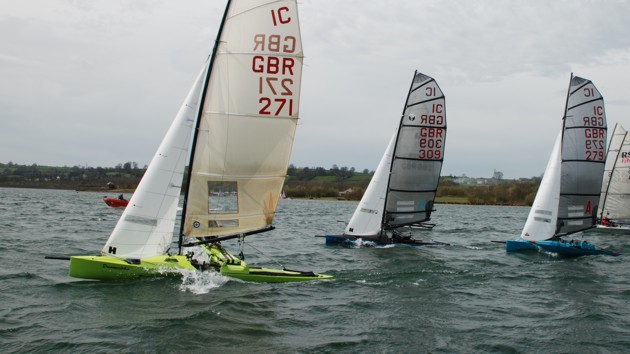
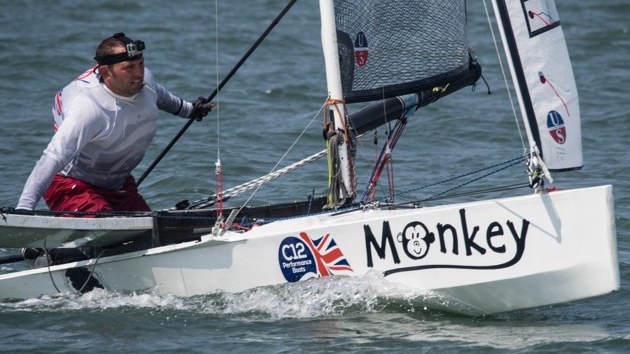
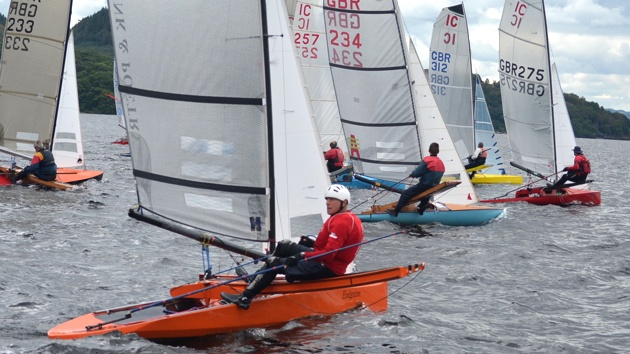
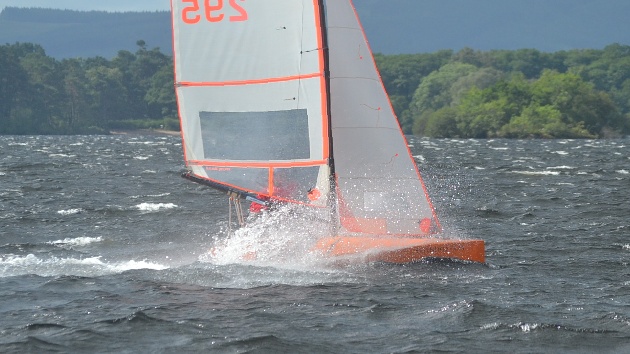

Ulrike_veerkamp.jpg)
Ulrike_veerkamp.jpg)
